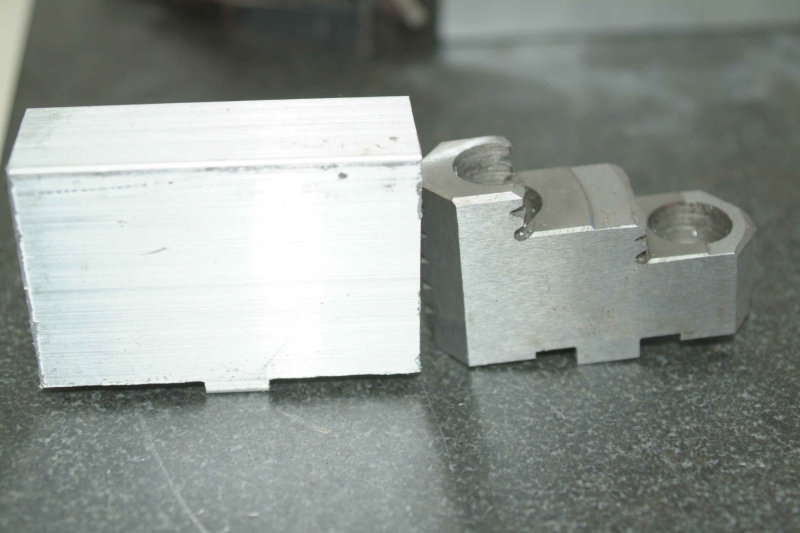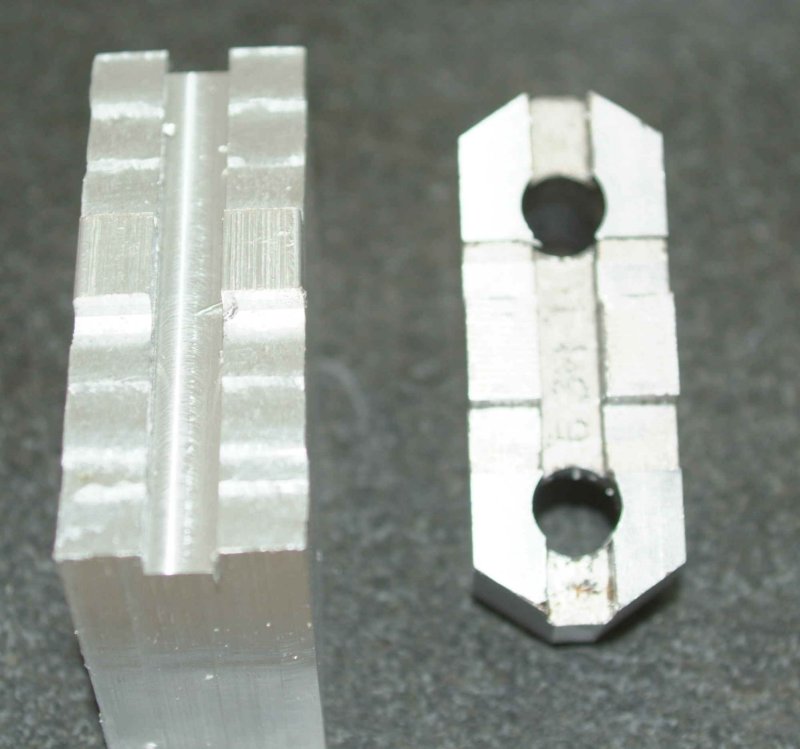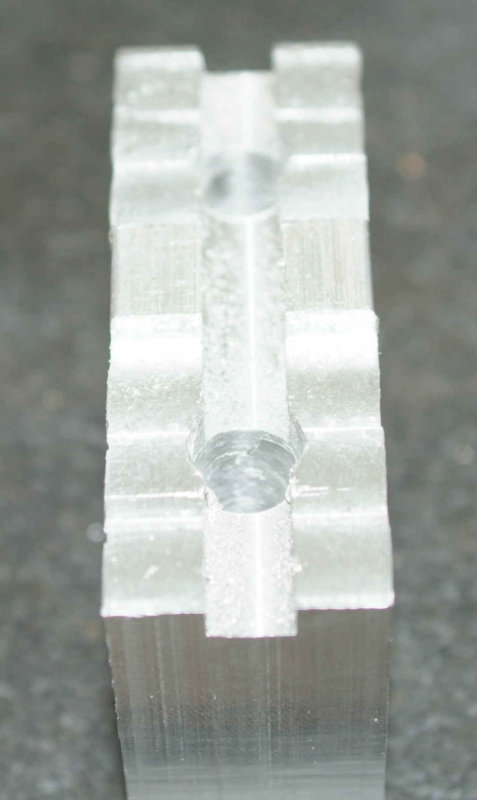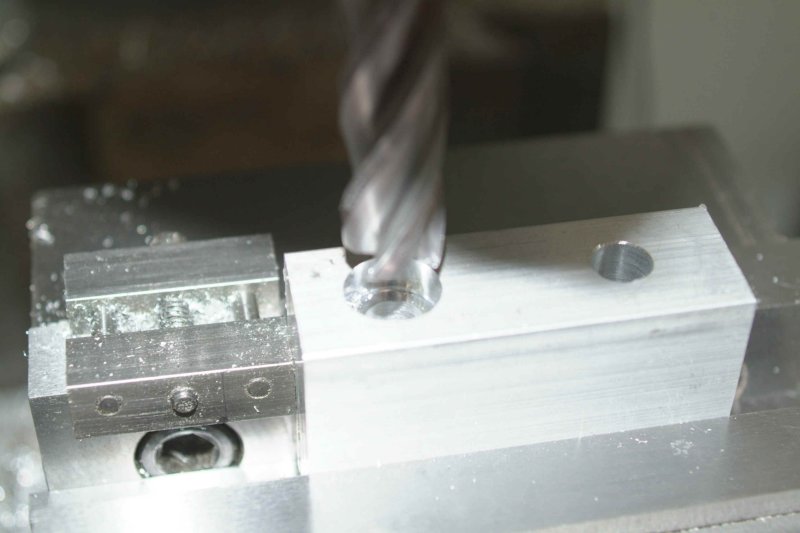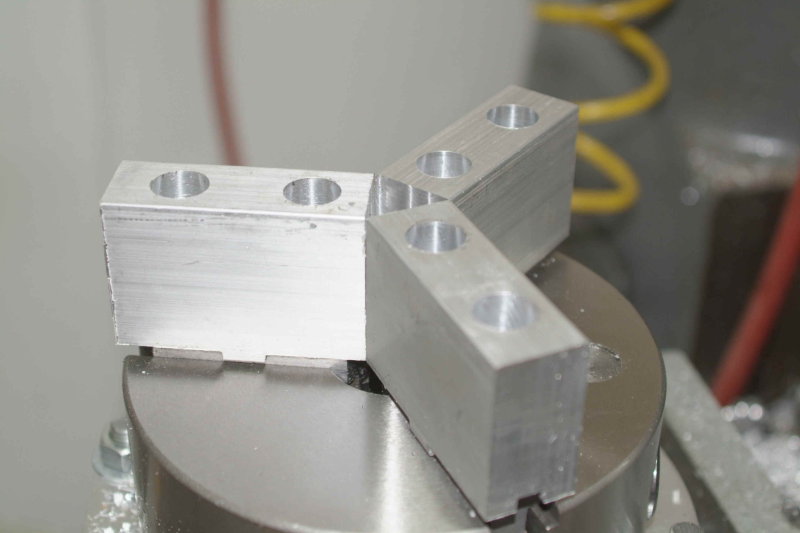Pictures say 1000 words so here goes! This is what I want to make:

It's a Brake Block for a model Railway Wagon...It's quite small -11mm tall and will be cut from a piece of 1/8" brass which will be screwed down to the machine table.
I'm using a cnc milling machine / engraver.
I thought I'd use 2.5 D and cut the parts out, then flip the part over, align with an edge stop and machine the other side.
Here is a screen of the cutting path. The orange area will be cut to a depth of 1mm. The Red outline will be cut to almost half of the depth. I will then machine to half the thickness of material but leave three leave tags to hold the part whilst it's being cut. I've also marked the holes in blue which will be drilled with a 1mm Carbide drill at the same time the first side is cut.

Just wanted some advice on how I'm going about this. I'll be making a number of small parts like this as I need a few to either get a rubber mould produced to get them cast or to use as the parts themselves.
Thanks in advance for any help!
Alan

It's a Brake Block for a model Railway Wagon...It's quite small -11mm tall and will be cut from a piece of 1/8" brass which will be screwed down to the machine table.
I'm using a cnc milling machine / engraver.
I thought I'd use 2.5 D and cut the parts out, then flip the part over, align with an edge stop and machine the other side.
Here is a screen of the cutting path. The orange area will be cut to a depth of 1mm. The Red outline will be cut to almost half of the depth. I will then machine to half the thickness of material but leave three leave tags to hold the part whilst it's being cut. I've also marked the holes in blue which will be drilled with a 1mm Carbide drill at the same time the first side is cut.

Just wanted some advice on how I'm going about this. I'll be making a number of small parts like this as I need a few to either get a rubber mould produced to get them cast or to use as the parts themselves.
Thanks in advance for any help!
Alan





